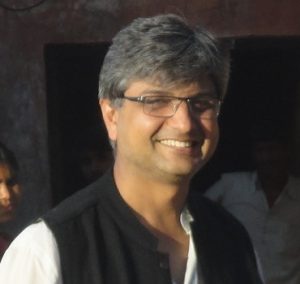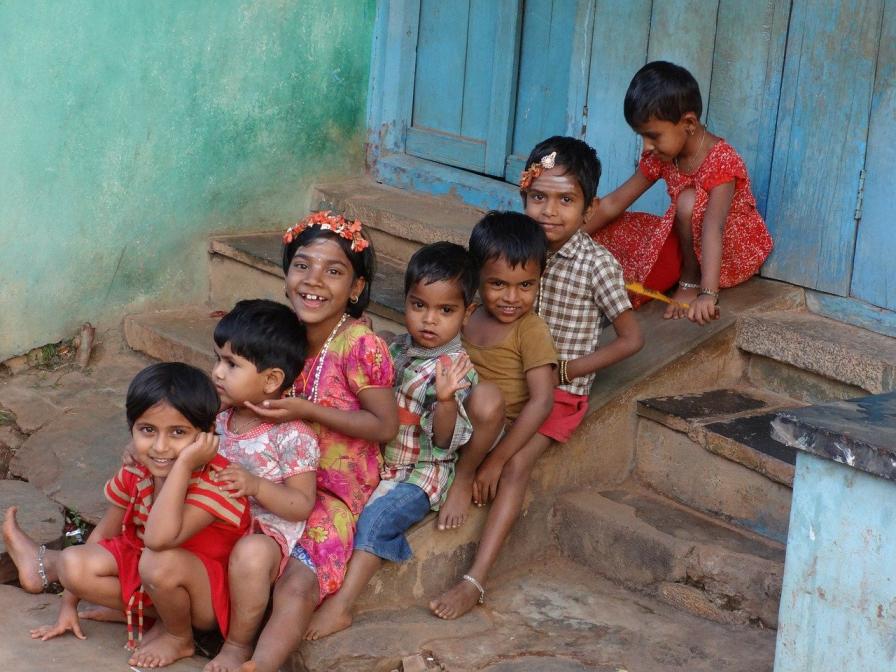Two-year old Rameela* lives in Nayaghar, 100 km from Udaipur and 35 km from the nearest town. For nearly three months now, Rameela has received a tiffin every morning, filled with sattu (a porridge made from cereals, pulses, sugar, and oil) and khichdi (a semisolid gruel made from rice and dal with added oil). It is delivered from the Nayaghar phulwari or day-care centre, where Rameela is enrolled. Rameela’s father was a daily wage earner in Ahmedabad, who left the city as soon as the lockdown was announced and walked back to his village—a journey which took almost two days. The family has very little money or food, and the tiffin that is delivered to Rameela is essential to ensuring her nutrition, health, and well-being.
The lockdown created a food crisis
The loss of livelihoods and non-payment of dues after the lockdown has left rural households with very little cash to buy food. As a result of supply chain disruptions, small stores, which are the lifelines of most villages, have had erratic stocks of dal, oil, sugar, and other essential items. Where such items are available, there have been times when prices have increased by 30-50 percent or more. Lack of transport has also limited travel from the villages to buy foodstuff or withdraw cash from banks.
The availability of foodstuff in these areas is poor through most of the year, and was highly inadequate even before the current crisis set in.
Our own experience from rural southern Rajasthan shows that while most families have wheat (both from recently harvested crops and that supplied by the public distribution system), they have limited access to supplies of dal, oil, vegetables, or milk—all of which are essential to ensuring that people, especially children, stay well nourished.
The availability of foodstuff in these areas is poor through most of the year, and was highly inadequate even before the current crisis set in. A 2014 study in select panchayats in southern Rajasthan showed that while wheat was available in about 87 percent of households, fewer households had any oil (74 percent) or pulses (44 percent), and none had any milk or poultry. Data gathered from across ten states through a National Nutrition Monitoring Bureau survey showed that consumption of calories, proteins, and minerals among rural households had declined significantly, and was at a level lower than 40 years ago.
However, what we see now is an almost famine-like situation. In most rural areas in the country, people are now eating fewer meals, as well as fewer kinds of foods in the day.
Related article: Why does undernutrition persist in India’s tribal populations?
Childcare in rural communities
The COVID-19 pandemic and subsequent lockdown led to the closure of anganwadi centres across the country. Anganwadis play a critical role in improving health and nutrition outcomes for young children, especially in rural communities, where food availability is inadequate, mothers of young children are stretched to complete their daily chores, and their own knowledge about childcare and nutrition is limited.
Over the years, several issues have been raised regarding the functioning of anganwadis—both structural as well as operational. While childhood malnutrition in India peaks before the age of two, anganwadis only enroll children after they turn three, by which time malnutrition has already set in. Additionally, they only function for four hours per day, while mothers in rural areas tend to work through the entire day and need childcare support for longer periods. Concerns have also been raised about the quality of services at anganwadis and the low enrolment rates that leave out many eligible children.
Organisations such as Jan Swasthya Sahyog, Ekjut, and Basic HealthCare Services, which we founded, run day-care centres that enrol children from the age of six months onwards and provide childcare for longer durations (6-8 hours every day). These efforts have shown a significant improvement in all forms of malnutrition—wasting as well as stunting among young children.

Anganwadis play a critical role in improving health and nutrition outcomes for young children, especially in rural communities where food availability is inadequate. | Picture courtesy: Basic HealthCare Services
We need to act now
Children are extremely vulnerable in any emergency, and the current crisis is no different. For many, a sizeable part of the golden period—the first 1,000 days from conception until the age of two—will have been spent under lockdown, during which either they or their mothers will not have received enough nutrition. The impact will be lifelong, as this period is vital to physical and cognitive development. Malnutrition during these 1,000 days has long-lasting effects that extend well into adulthood.
Malnutrition during these 1,000 days has long-lasting effects that extend well into adulthood.
However, even when anganwadis are closed, they still remain our best bet to reach children. Now is the time to take nutrition from anganwadis to children’s homes. Our experience from day-care centres in rural, remote communities in Udaipur supports this approach: Since the lockdown began, the day-care centres, while remaining closed, continue to provide hot, cooked food to more than 250 children under five years of age. Most of their families have little to eat and the nutritious meals that are delivered to them are by far the only nutritious food these children consume.
While some states, such as Kerala, Karnataka, and Telangana have sent weekly packets of raw ingredients, including dal, rice, oil, and more to all children enrolled in anganwadis, others have taken a much more conservative approach. This typically involves sending children a take-home ration or THR, which consists of a premix of cereals, pulses, and sugar that can be made into a porridge, or a package of wheat and a pulse. However, the nutritive value of this THR is insufficient, and the fuel and time that is required to cook it is in extremely short supply for mothers from marginalised families.
On the field in rural Rajasthan, we have also seen that the distribution of these food packets is patchy and erratic—they have reached some villages, but many have also been left out. And in those villages that have received these packets, several children have been left out completely, provided inadequate amounts, or provided only one item—typically wheat, with no pulses being given. Such irregularities in distribution have also been reported in other parts of the country.
Related article: A day in the life of: A community health worker
What anganwadis can do
There are three things the anganwadis need to do urgently to secure children’s nutrition and health outcomes.
This is absolutely vital for them to grow well. A THR alone is not adequate, and pulses, oil, and an additional cereal (such as ragi, suji, or rice) are also required. Given the constraints of fuel and time, cooked food is much more useful than raw ingredients alone.
Supplies should not be limited to those who are more than three years old, and are currently enrolled in anganwadis. Reaching all children, and reaching them early in their life, will prevent them from slipping into malnutrition.
With the restarting and expansion of MGNREGA (Mahatma Gandhi National Rural Employment Guarantee Act), many mothers are now working at MGNREGA sites, often with no one to take care of their young children. Therefore, setting up crèches at worksites is imperative. These should be seen as extensions of anganwadis, providing care and ensuring nutrition for young children.
In the months ahead, economic slowdown, loss of jobs, and restriction of movement will continue to affect food availability in rural areas. More resources must be allocated to anganwadis so that they can provide hot, cooked, nutritious meals as well as care to all children under five. This would help to partly compensate the unjust impact of the lockdown and its consequences on children in rural areas, especially those from the most marginalised families.
For too long childcare and nutrition have not received the attention that they need. There is an imperative to act now. While the COVID-19 pandemic is a crisis of enormous proportions, it is also an opportunity to set right some of the key flaws facing anganwadis in India. Otherwise the situation could worsen further and reversing it will be much more difficult.
*Name changed to maintain confidentiality.
—
Know more
- Learn more about how anganwadis and India’s Integrated Child Development Services (ICDS) work.
- Explore India’s nutrition profile, as per the Global Nutrition Report 2020.
- Read the latest findings on child stunting, wasting, and malnutrition compared across Indian states.
Do more
- Connect with the authors at info@bhs.org.in if you’d like to learn more about their work or volunteer with them.





